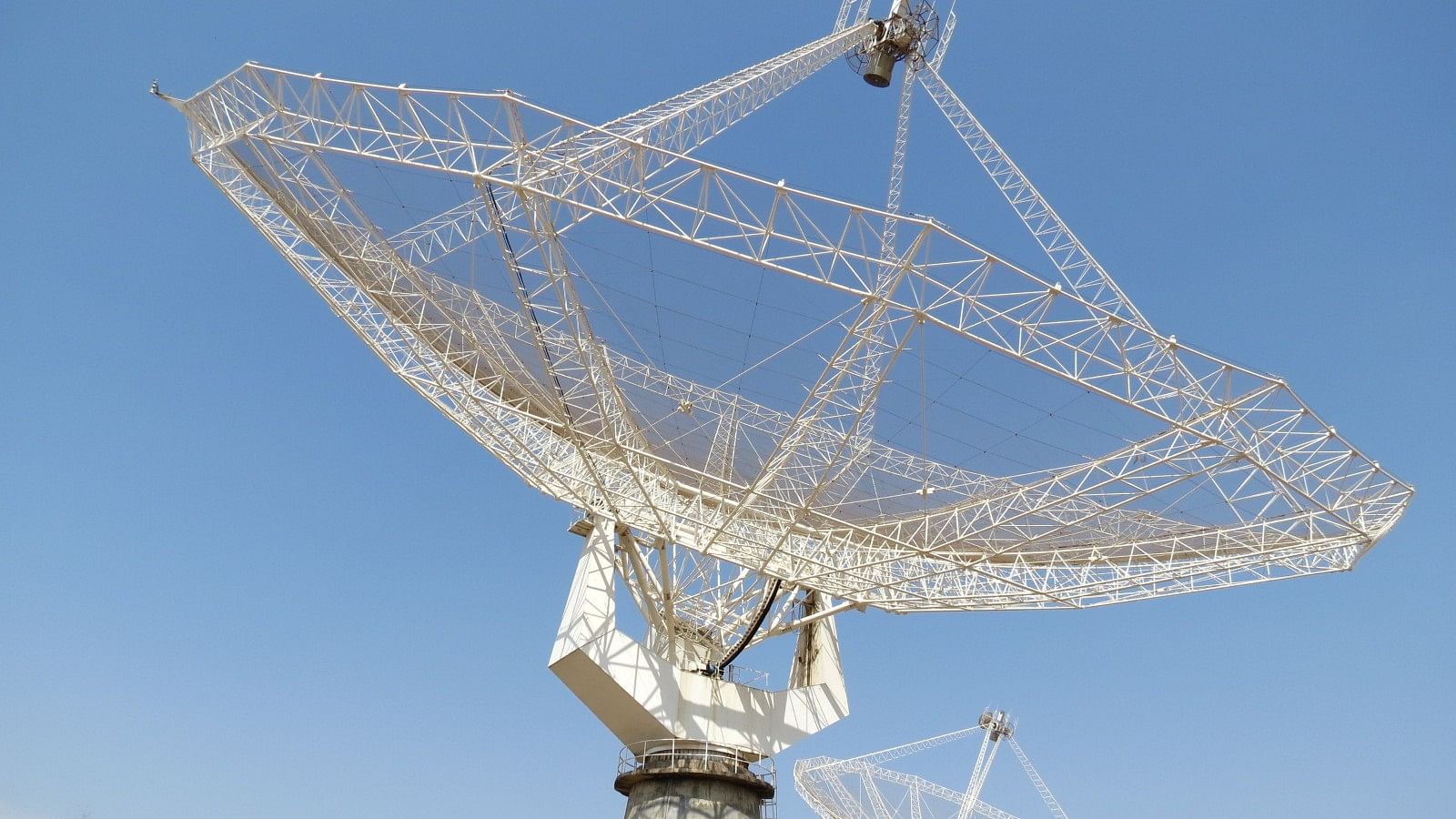
GMRT
Credit: Special Arrangement
New Delhi: Tucked at a corner of Maharashtra, an Indian radio-telescope played a pivotal role behind the discovery of the biggest pair of black hole jets ever seen by astronomers, spanning 23 million light-years in total length.
Critical cosmic signals picked up by the Giant Metrewave Radio Telescope at Khodad village near Pune have aided an international team of astronomers to spot the monstrous jets, whose length is equivalent to lining up 140 Milky Way galaxies back-to-back.
“The GMRT has higher sensitivity and slightly better resolution than a European telescope initially used to survey the sky for the study. The GMRT observations were used to track the black hole jets to the origin galaxy,” Yogesh Wadadekar, a senior scientist at the National Centre for Radio Astrophysics, which runs the telescope, told Deccan Herald.
No scientists from NCRA or other Indian institutes were involved in the study that made headlines last month because of its pathfinding nature.
The jet megastructure, nicknamed Porphyrion after a giant in Greek mythology, dates to a time when the universe was 6.3 billion years old. For comparison, the universe currently is 13.8 billion years old.
These outflows — with a total power output equivalent to trillions of Suns — shoot out from either side of a supermassive black hole at the heart of a remote galaxy.
"In the center of every major galaxy, there is a big black hole of about a million to a billion solar masses," says Martijn Oei, a postdoctoral scholar at the California Institute of Technology (Caltech) and the lead author of the study.
"It swallows stars, dust, and plasma, basically everything that comes close. But a small fraction of the material that comes close to the black hole is ejected outward in the form of such jets."
The gigantic jet system is one of thousands of faint megastructures found using Europe's LOFAR (LOw Frequency ARray) radio telescope. But the specifics were not known and that’s where the GMRT chipped in.
Oei's team, comprising scientists from the USA and Europe, used GMRT observations to identify the host galaxy that spawns the jets. Once the host was identified, the researchers used the Keck I optical telescope in Hawaii to obtain the distance.
The team used 10 hours of GMRT observation – carried out remotely - to crack the puzzle. “Nearly 60 per cent of GMRT users are from abroad nowadays and they mostly use remote observations. The sensitivity of the telescope was enhanced following upgradation,” Wadadekar said.
Conceived by veteran astrophysicist Govid Swarup and built over 12 years, the GMRT is an array of 30 antennas (each of 45 m diameter) spanning over 25 km and provides a total collecting area of about 30,000 sq m at metre wavelengths.
The telescope was commissioned in 2001 and after 15 years it went through an upgrade that enhanced its sensitivity.
“The study of supermassive black hole jets in radio galaxies has been an area of research where the GMRT has made several important contributions over the last two decades. The discovery of Porphyrion - published in Nature - is another achievement for the telescope,” the NCRA said in a statement.
